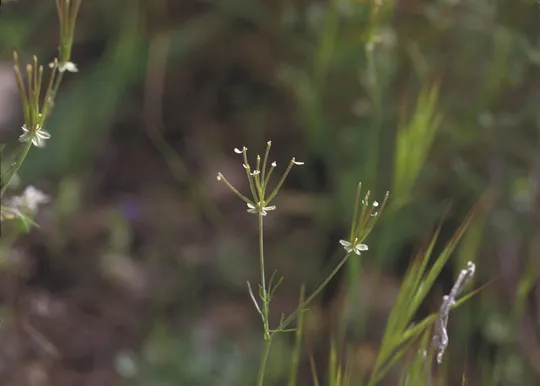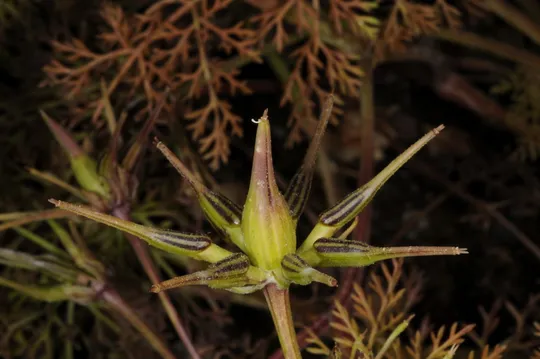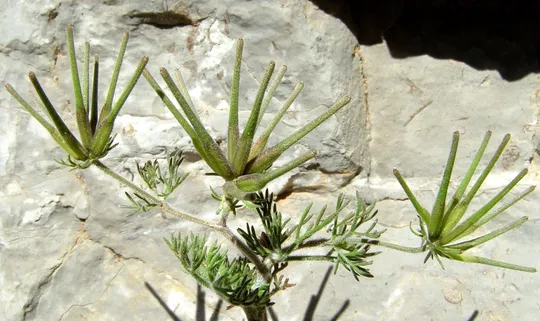Scandix blepharicarpa
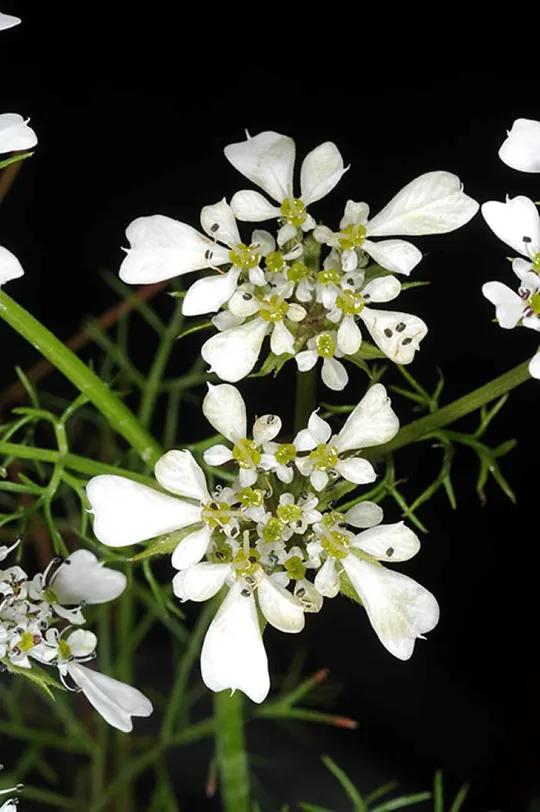
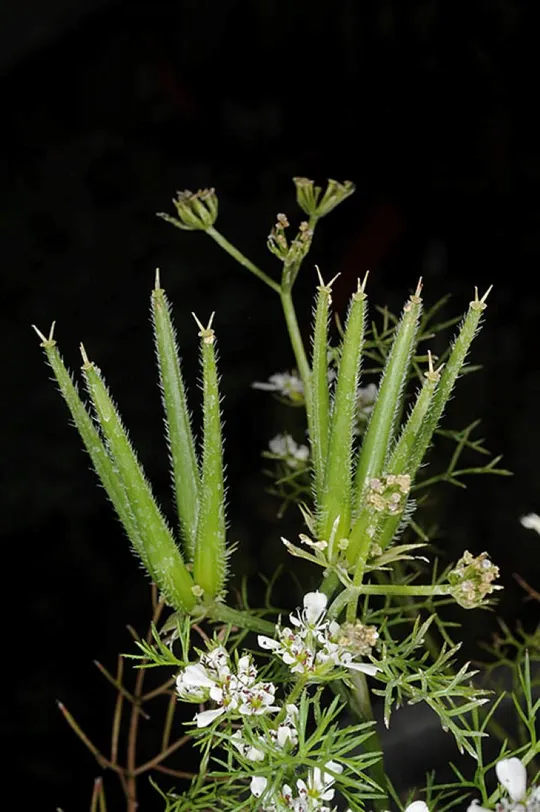
Scandix blepharicarpa grows in Israel
in the eastern Upper Galilee and in the southern Golan. In the eastern Upper Galilee,
it is found at two sites on the Alma Heights. In the Southern Golan it is found
at one site located between El Al and Ramat Magshimim. Thus, there are three
documented sites, although there is concern that it survived on only one site
or possibly two. Ofer Cohen discovered S. blepharicarpa in the Upper Galilee in 1991 and
described it, identifying it as a new species (Cohen, 1992). The species had
been randomly collected in the southern
Golan as an unidentified species in the 1970s, but after the new species was
described, it was found to be S.
blepharicarpa. There may possibly be other sites in the Golan Heights because the
habitat type is very common. However, confirming this will requires additional
surveys.
Herbaceous
vegetation on deep heavy basaltic soils that are periodically flooded in winter
and dry in the summer.
For the genus Scandix and additional Scandix
species – see S. palaestina, S. australis
and S. stellata.
S. blepharicarpa is unique in the
genus due to its swollen mericarps. Its general appearance, before the fruit
ripens, is extremely similar to S.
verna (formerly S.
iberica)
that is more common and even creates carpets of flowers throughout the range of
S. blepharicarpa. The fact that the species was found
only in 1991 is fascinating and suggests that there are other new species that
will only be detected following detailed surveys and phenological monitoring
throughout the growth season.
·
As Scandix blepharicarpa became known
only recently, it is difficult to assess changes in the numbers of sites. Moreover,
there are probably other sites in which the plant has still not been
identified. Furthermore, it is difficult to identify due to its similarity to S. verna (formerly S.
iberica) that is more common (they can be told apart only
at the fruiting stage).
·
S. blepharicarpa grows in a rare
and unique habitat (particularly in the Upper Galilee) – basalt soil that is occasionally
flooded in winter. The populations grow in dense concentrations, but over a
broad area at the site.
·
The sites are located near very accessible
farming communities. Cattle grazing and agricultural development threaten S. blepharicarpa habitats.
·
The eastern Upper Galilee sites are
not located within nature reserves, but it is likely that there may be
populations growing in the Iris grant-duffii Reserve in the Ahu Nov that have not yet been
identified
S. blepharicarpa is an endemic species; therefor its
local threat status is equivalent to the global risk for the species.
A field survey
should be conducted during the Scandix blepharicarpa flowering season in an attempt to
locate additional sites on the basalt heights of the eastern Upper Galilee and
the Golan. Long-term monitoring of S. blepharicarpa at its known sites should be
conducted and seeds should be collected for growing plants in botanical gardens
to produce seeds and create a seed bank. Specific protection sites should be
established, even outside nature reserves and controlled grazing should be
implemented at the sites to reduce possible damage from overgrazing.
Scandix blepharicarpa is endemic to Israel and is known only from the
eastern Upper Galilee and southern Golan Heights. Because its habitat is sometimes
flooded in winter, in the future it may be found in southern Syria, particularly
in Hauran toward Ǧebel Druz, an area where there are similar habitats.
Scandix
blepharicarpa is an extremely rare annual plant of heavy, periodically
flooded, basalt soils, in sites adjacent to agricultural areas. It is endemic to Israel and was first discovered and identified as a new
species only in 1991. Additional surveys are needed to assess its threat status
and to propose conservation and management solutions.
Cohen, O. 1992. A New species of Scandix (Umbelliferae) from Israel. Israel Journal of Plant Sciences 52 (1): pp. 59-63.
Current Occupancy Map
| 1000 squre meter pixel | 5000 squre meter pixel | 10000 squre meter pixel | |
|---|---|---|---|
| number of observations | 0 | 0 | 0 |
| in total pixels | 0 | 0 | 0 |
| Family | Apiaceae |
| Classification | On the endangered species list |
| Ecosystem | Mediterranean |
| Chorotype | Eastern Mediterranean |
| Conservation Site | Alma Heights |
| Rarity |
1
4
6
|
|---|---|
| Vulnerability |
0
2
4
|
| Attractiveness |
0
0
4
|
| Endemism |
0
4
4
|
| Red number |
1
5.3
10
|
| Peripherality | 0 |
| IUCN category | DD EW EX LC CR EN VU NT |
| Threat Definition according to the red book | Critically endangered |
 Based on:
Based on:
